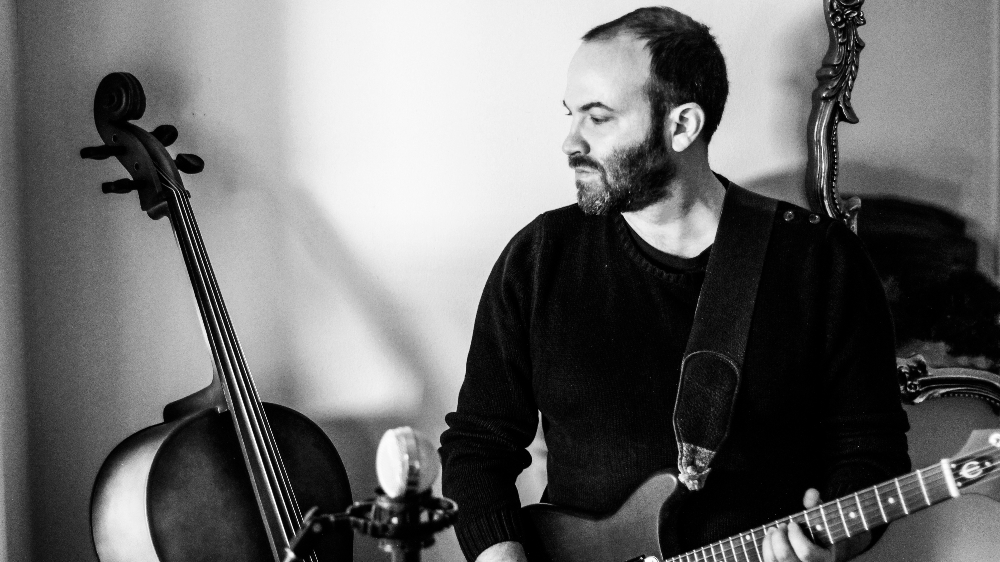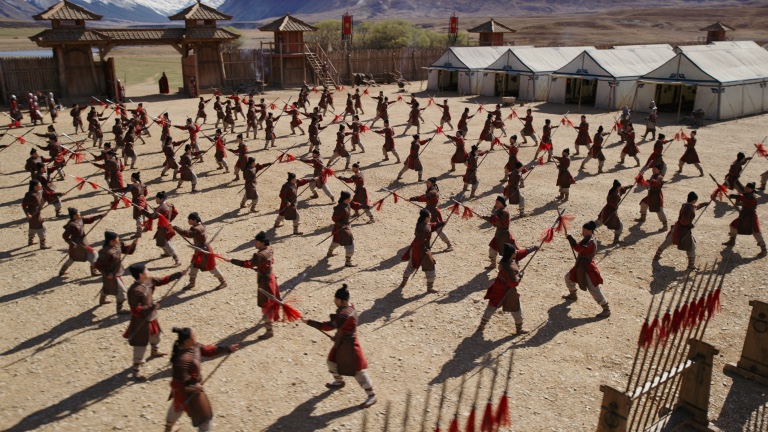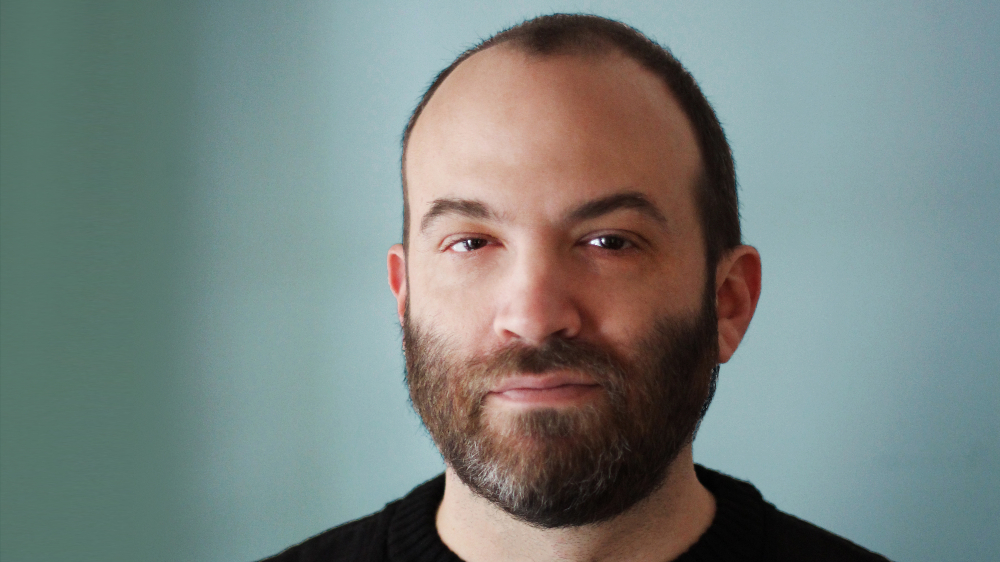
What do Dakota Johnson and Composer Nathan Halpern have in common? They both had two features at this year’s Sundance Film Festival, though Halpern also had a short film in the lineup, so he may very well have been the busiest artist at this year’s fest.
Halpern scored a pair of very different thrillers — Emily the Criminal starring Aubrey Plaza and the Maika Monroe movie Watcher, and not only did both of them sell to theatrical distributors — Emily to Roadside Attractions/Vertical Entertainment, Watcher to IFC Films — but both films also happen to be pretty good.
Written and directed by John Patton Ford, Emily the Criminal finds Plaza playing a debt-ridden young woman who gets involved in a credit card scam that pulls her into the criminal underworld of Los Angeles, which ultimately has deadly consequences. Chloe Okuno‘s Watcher takes place overseas and also follows a young woman (Monroe), albeit one who begins to get the queasy feeling that she’s being stalked by an unseen watcher in an adjacent building.
Halpern really ratchets up the inherent tension of both films, and he was nice enough to take some out of his busy festival schedule to speak with Below the Line and explain his approach to each project. Please enjoy our full chat below:
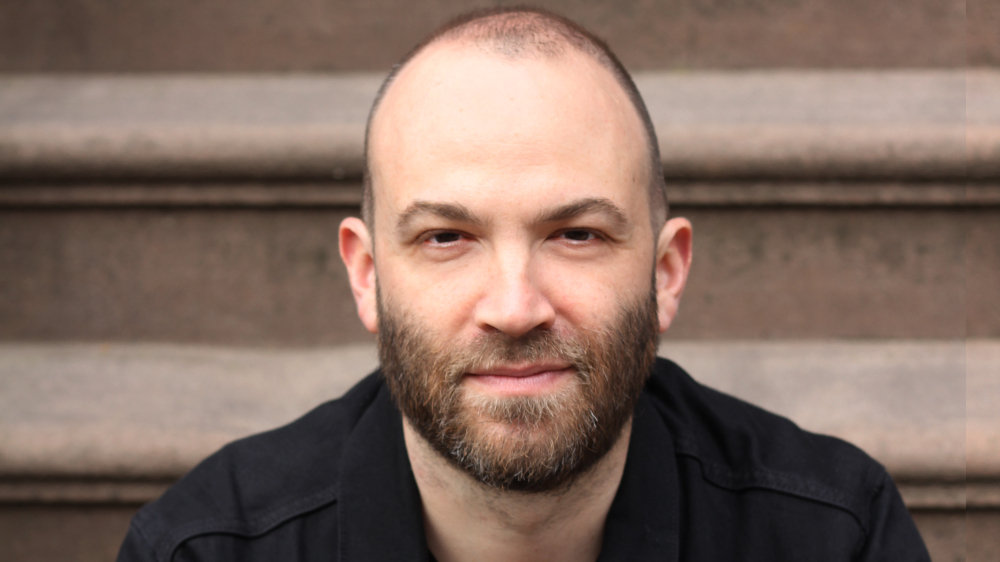
Below the Line: What’s your background as a musician, and how did you get your start as a composer?
Nathan Halpern: It’s interesting, music and film were interests that I had simultaneously but in parallel. So, like, coming up in New York City, I was playing in bands and touring the States and Europe and performing, doing a lot of recording and sort of underground music, doing post-punk, and at the same time, [I] was very involved just sort of personally with cinema, which had also been an interest of mine that had developed in parallel from my interest in music as a pre-teen and as a teenager, basically.
So all that time while I was in New York City playing in bands, I was also spending a lot of time in our great repertory cinema world in New York City, at Film Forum and Anthology, and that was hugely important to me. I was not thinking all that much about film music per se, I was just more interested in film both for my own sort of aesthetic and emotional interest in it. But I was also always interested in it as a musician, which is to say, it was something that I took a lot of inspiration from, for ideas and aesthetics in my own music.
I’ve talked about this before, but I remember being 15 or 16 and watching Rosemary’s Baby and staying up all night writing music that was sort of inspired by that experience, and as a teenager, I had any number of experiences like that. Night of the Hunter was a similar one for me.
So later, when I kind of stopped touring, there were some editors that I knew who asked me for some music for a couple of projects they were working on, and it went quickly from there, and I kind of put those two things together. And of course, all the time I had spent immersed in cinema and thinking about cinema kind of informed my jumping into this as I began to get those opportunities. My friend sort of jokes that putting these things would’ve seemed very obvious but it actually didn’t occur to me until a bit later.
BTL: How did you get involved with both Emily the Criminal and Watcher?
Halpern: So for both of the films, I read the scripts first. For Watcher, I was sent the script, really dug it, talked to Chloe, and I also really enjoyed not only the script, but her treatment and ideas about it that surrounded the material, some of the cinematic references, and the kind of vision that she laid out for how those were going to look and feel, and a lot of it really connected with many favorite films of mine. She talked particularly about [Roman] Polanski and [David] Fincher, and stuff like that, and these are [filmmakers] I really love, so connecting these ideas in my mind was very exciting.
Furthermore, when I first spoke with her about it, I was really excited by two other things that she mentioned. One was the kind of emphasis on the psychological interiority and experience of the lead character. Something that we wound up talking about a lot, which I’m sure you and I will discuss later, is that this was something that we were really going to be using music to kind of help with and really stick with her point of view, and that’s something that interests me a lot, and that I think about a lot in so many scores that I work on, and I was very excited by that idea.
And the other thing is that she, at that time, was in the process of doing another rewrite of the script to relocate it in Bucharest, in Romania, where they were going to be shooting it. She’d had the thought at that point that rather than just pretend this is some American city or New York City where it was originally presented in the script, this is gonna be in Bucharest and Romania and I immediately thought ‘wow, that is incredibly exciting.’ It opens up all sorts of things, both for the story and for the music.
I’ve spent some time in eastern Europe and in Russia and Moscow, and I knew that cinematically, for this experience of the film itself, this was going to open up a lot of interesting things, a lot of special flavor and personality that it kind of brings out in so many layers and dimensions. I also thought it might give us some opportunities to have that, in some subtle-but-interesting way, influence the score a little bit, and I think that that did wind up happening.
It’s a bit hard to articulate but there’s something about that slightly ancient eastern European affect that I think subtly informs the score, and certainly, the use of synthesizers in it, where a lot of these sounds came from, were kind of these old, Soviet-era synthesizers that would have this kind of dilapidated, archaic quality to them. And the idea of the sound palette was also subtly influenced by and meant to be subtly evocative of that world.
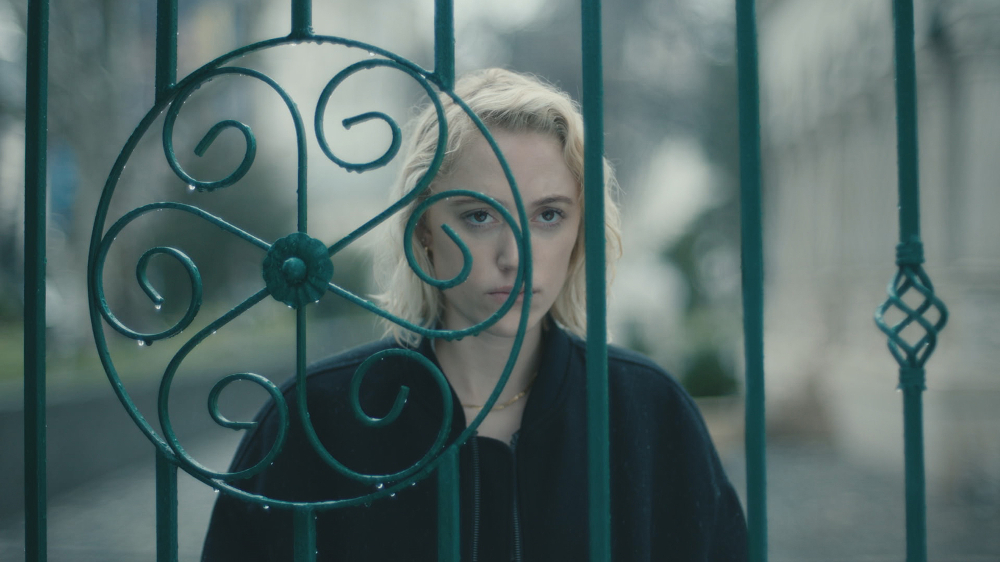
BTL: That’s interesting, that if Watcher had been set in Seattle, it actually would’ve sounded different and led to a different kind of score.
Halpern: It’s hard to say, but it’s certainly possible. I’ll say this — some of the influences and references and the kind of vibe of the world and the style in which she was shooting it, for me at least, from a musical point of view, already had an intrinsic, slightly kind of old-world European quality to them in some ways, and so actually being in eastern Europe allowed that to flower even further.
BTL: And how did Emily the Criminal come to you?
Halpern: With Emily the Criminal, similarly, I read the script and talked with John. I don’t exactly remember the timeline, but this was a little while ago because the film definitely did get delayed due to COVID at one point. But I read that script, and if you’ve seen the film, you can see the script is incredible and just a pulse-pounding experience.
I had several really long conversations with John about the film and the ideas of the film and the point of view of the character pretty well before they shot [it], so I had it on my mind for quite a while. They had to scrap so hard to pull it together with COVID delays and everything, and then they shot it in, like, 20 days, and they really pulled it off. So when it came down to scoring it, even though we wound up doing the work on it quite quickly, I’d been thinking and ruminating about it for some time.
BTL: Did the pandemic affect your process at all?
Halpern: Yes and no. On the one hand, as I’m sure a lot of composers will tell you, we’re quite used to kind of being alone in a room and composing, and that’s so much of our process anyway, so there’s that. On the other hand, there’s still a little bit more time, even if it’s not a lot, but there’s some amount of more time than I think ordinarily the directors and editors and myself may be spending in the room, in some capacity, and there was less of that.
BTL: So there was nothing terribly unusual about the process?
Halpern: I think that there may have been some subtle things, but clearly, the real, hardcore impact of COVID on these productions would’ve been in their scheduling, and for the people in production and on set. And if you’ve been to a COVID-era set, it’s certainly quite difficult and complex with people who are actually in production. So I really can’t complain.
BTL: Was there any specific guidance that John or Chloe provided you, or notable ways in which your collaborations with the two of them were different?
Halpern: In Watcher, and there’s some commonality here [with Emily], one of the things that we came back to time and again, either in figuring out or finessing a particular piece we were working on or discussing what a piece of music would sound like, Chloe would speak very clearly and directly about the emotional experience of our lead character, Julia, in that moment, and kind of where she was at. And that was always our kind of guiding principle, in terms of a given scene — to make sure that we were as true to her experience as we could be, and that ranged from a general ennui with a touch of dread beneath to a more serious level of fear and anxiety or something like that. But whatever it was — and this is a very important way for me to work — that was sort of a guiding principle, and that, for me, can mean a couple of things…
That can mean something that you sort of have in mind, and sort of guides you from the unconscious as you’re composing, even if you’re not thinking about it too much but it’s just kind of there in the back of your head and sort of motivating the creation of the music. And then other ways where we’re not exactly sure what something should be or how it should go, or we want to finesse it, that’ll be the thing that will really guide the piece.
I don’t want to give anything away about the scenes in the film, but I remember in our collaboration, there was one scene in particular towards the end of the film where, in kind of really digging into the particular moments and beats of a particular key scene, the thing that was always sort of guiding us and guiding Chloe’s notes to me were about [Julia’s] authentic interiority in that moment, which was really terrific.
We’ve touched on this a bit, but the other kind of broader aspect would be this sort of overall vibe of the piece and the type of world that we’re in. I think we sort of establish it at the very beginning, [where] we have this opening piece in the film which has piano and strings, but it also has some slightly kind of warped sounds and a bit of bell, and there’s some kind of warped bow glass sounds, and Chloe liked the idea that we’re establishing this as something of a warped fairy tale.
On the one hand, you want to have real authenticity and truthfulness as far as the characters’ experience, and there’s something real and grounded about this, but at the same time, this is also being framed in the context of, in some ways, a kind of timeless story, and something that’s going to fit with the visual style of this film, which is quite heightened and stylized and very beautiful in its aesthetic.
BTL: I liked that Chloe didn’t give us subtitles, as that helped put me in Julia’s headspace as an outsider.
Halpern: Yes, and certainly, the American and European leads were all spectacular, but all of the Romanian performers, each of them is so wonderful as well.
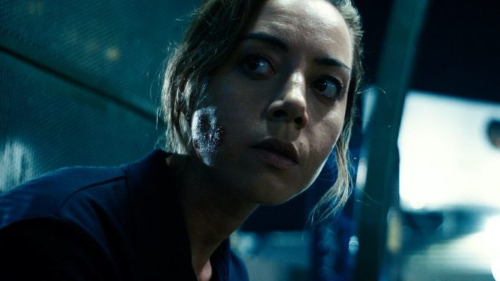
BTL: And with Emily?
Halpern: With Emily, there were a couple of things that we talked about, and this perhaps may be an area of overlap, but similarly, John was extremely committed to the idea that the key function in the score was to really connect us to the psychological interiority and emotional journey of Emily, and we were always going to be as true to that as we could be. That was the most important thing, and that was going to be the most key role that music was going to play.
And there are a couple of key pillars to that in the score. One is that in certain moments of tension, and this was something that he sort of found in the process of editing and figuring out the sort of bold style of the film, but the film shows this very real depiction of LA. There’s a real kind of grittiness to it. It’s not a kind of fake, mythical LA or some kind of LA from the movies. It’s a very real place, so in some more moments of tension, we wanted to treat these very truthfully with the score, and the score was not going to over-amp things. It was going to be subtle and truthful to her emotions.
Similarly, there would be certain moments in which, and they were very selective, but where we’re going to use those to express some other moments, some of the angst and feelings of a bit of anger and injustice at the kind of hand that she’s been dealt. And in other cases, in subtle and select moments, although this is a very specific story that’s set in a particular genre, we’re also seeing something that’s quite universal. It is a coming-of-age story and it is about somebody in the process of becoming who she is and kind of attempting to, through all kinds of difficulties, self-actualize, and to transcend certain things and find those moments. And there are moments in the score which speak to that and speak to these kinds of more timeless, universal kinds of personal journeys. It was about finding the right moments in which to get to do that in the music.
BTL: What are some of your favorite film scores and who are some of your favorite composers?
Halpern: The first time I remember really noticing the sound of a score as a teenager was the score for the David Cronenberg film Videodrome, which is a really unique and spectacular sound. The [Ennio] Morricone score to The Great Silence, the winter Western starring Klaus Kinski, is another favorite of mine. It’s really incredible, and of course, so many Morricone scores both more and less famous are really wonderful.
And then connected to that, in retrospect, I realize there are cinematic qualities to the music that I kind of came up with and inspired me for years, from [my] teenage years like Velvet Underground, Serge Gainsbourg, and Scott Walker, who was really big for me. And then also there’s a direct cinematic connection here too, of course, but also in production, to the Wu-Tang Clan, which I feel is very important for the development of film scoring and production techniques in so many ways.
BTL: Is there anyone who worked with you on these two scores who merits a shoutout?
Halpern: Chris Ruggiero, who did a lot of work with me on this Emily the Criminal score, and we’ve worked together on so many projects going back a number of years. We played in bands together and he’s really terrific. And Robert Pycior, who plays strings on both of these scores. We also all co-composed another film at Sundance, a Netflix short doc called The Martha Mitchell Effect.
BTL: Have you ever attended Sundance before, and if so, what’s the thing you missed most about the festival this year?
Halpern: I’ve been to Sundance many times, quite a lot, and I was planning on going, so there are a couple of things. One is, above all, for the directors of these films, these are films that are so close to their hearts. They’ve worked for years to make these happen and then made them in difficult circumstances during COVID, and I miss sort of being able to kind of celebrate them and their accomplishment here in person. At the same time, the honor of these films, for them to have this platform here at Sundance, I’m so excited for them because they deserve it,
And then personally, for me as a composer, Sundance is often a time when I see other people from our little composing community. That’s often a key time and we get to spend some time together, and that’s always really nice, so I do miss that.
BTL: You’ve been working primarily in the indie space, so would you like to do a big studio blockbuster at some point?
Halpern: I really don’t differentiate these things. Indie vs. other stuff is really more of a business and financial question than anything else. As you know, I work across all sorts of different genres and formats, so I’ve done things that are sponsored by independent studios or sponsored by streamers or things that people kind of come up with on their own. What I’m really just the most interested in is something that has something to say and has something interesting and exciting and emotionally engaging from an aesthetic and cinematic point of view. That’s where it’s at for me.
What’s next for you, Nathan?
Halpern: I’m not at liberty to talk about it yet, unfortunately, but there was a great film that I scored last year called Catch the Fair One. It’s a really terrific film, and a quite devastating thriller grounded by this incredible performance by Kali Reis and directed by Josef Wladyka, and produced by Darren Aronofsky and Mollye Asher, who did Swallow and Nomadland and The Rider. It’s so terrific and powerful, and Kali just got an Independent Spirit nomination for her performance. It’s her first role and she’s so brilliant in it. That’s coming out in February.
Watcher and Emily the Criminal are both slated for release later this year.
